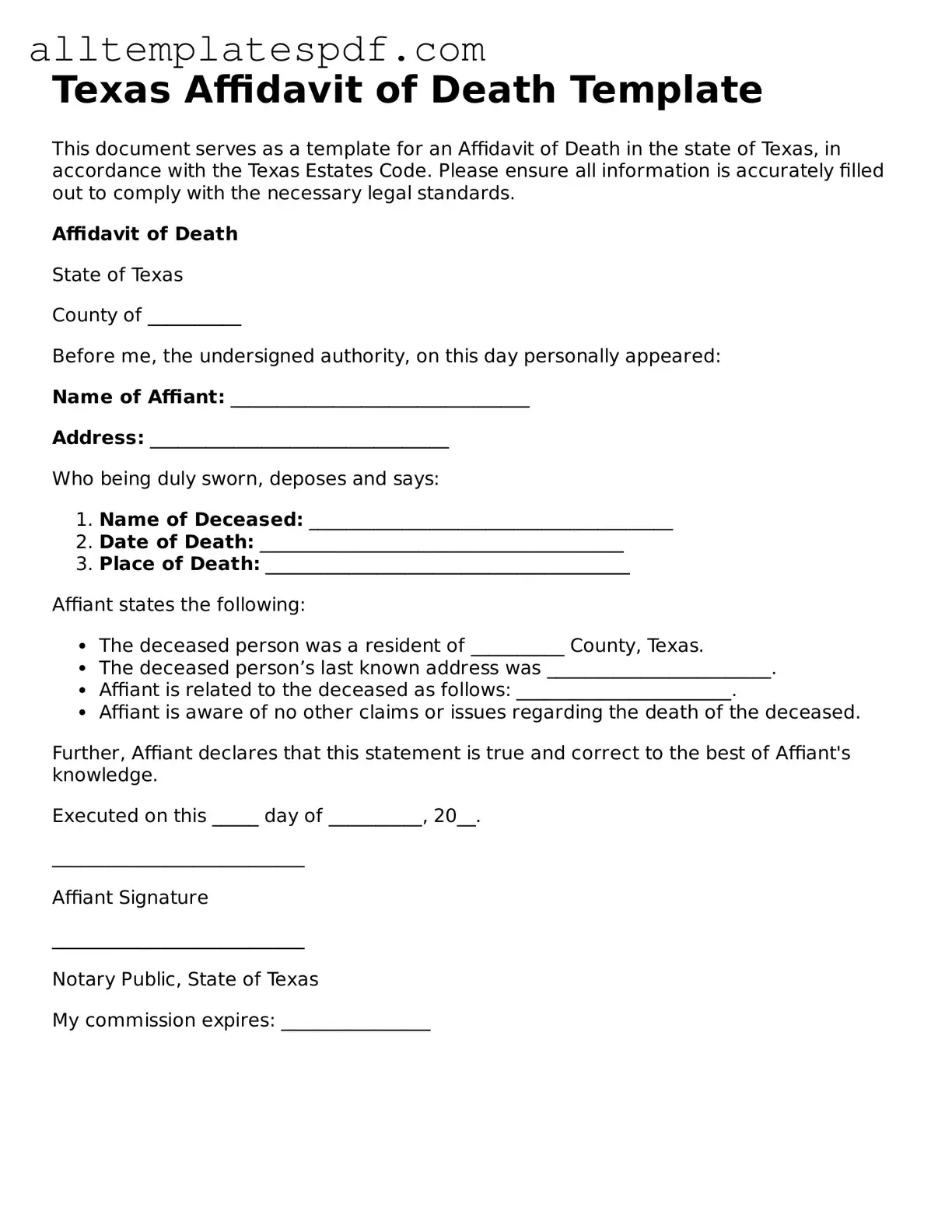Filling out the Texas Affidavit of Death form is a crucial step in the process of settling an estate. However, individuals often make mistakes that can lead to delays or complications. One common error is failing to provide accurate identifying information about the deceased. This includes the full legal name, date of birth, and date of death. Inaccuracies in this section can create confusion and may require additional documentation to rectify.
Another frequent mistake involves the omission of required signatures. The form must be signed by the affiant, who is typically a person with knowledge of the facts surrounding the death. If the signature is missing or not properly executed, the affidavit may be deemed invalid. It is essential to ensure that all necessary parties have signed the document before submission.
Individuals often overlook the importance of notarization. The Texas Affidavit of Death must be notarized to be legally binding. Failing to have the affidavit notarized can render it ineffective, leading to further complications in the estate settlement process. Notaries are available at various locations, including banks and law offices, making this step relatively easy to complete.
Another mistake is providing insufficient supporting documentation. The affidavit may require additional documents, such as a death certificate. Without these documents, the affidavit may not be accepted by the relevant authorities. It is advisable to check the specific requirements for supporting documentation before submitting the form.
Some individuals may also misinterpret the purpose of the affidavit. The Texas Affidavit of Death serves to establish the fact of death for legal purposes, but it does not address the distribution of assets. Confusing these two functions can lead to misunderstandings about the role of the affidavit in the estate settlement process.
Inaccurate or incomplete descriptions of the deceased's estate can also pose problems. The affidavit should clearly outline the nature of the deceased's property and any relevant details about the estate. Vague or ambiguous language can lead to disputes among heirs and complicate the probate process.
Additionally, people sometimes fail to keep copies of the submitted affidavit. Retaining a copy is essential for personal records and may be necessary for future reference, especially if questions arise regarding the estate. Without a copy, individuals may struggle to provide proof of submission or to clarify any issues that may emerge later.
Lastly, individuals may neglect to review the form for errors before submission. Simple typographical errors or omissions can lead to significant delays. A thorough review can help catch mistakes that might otherwise go unnoticed, ensuring a smoother process in settling the estate.
